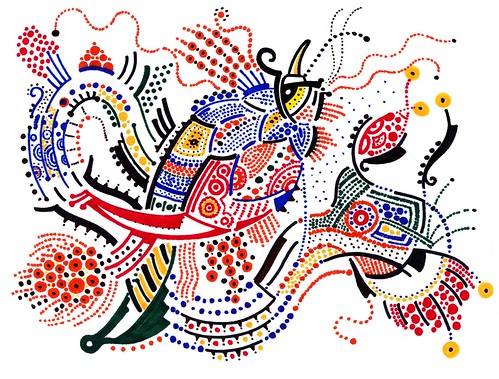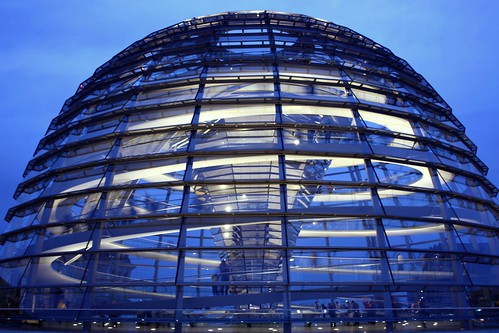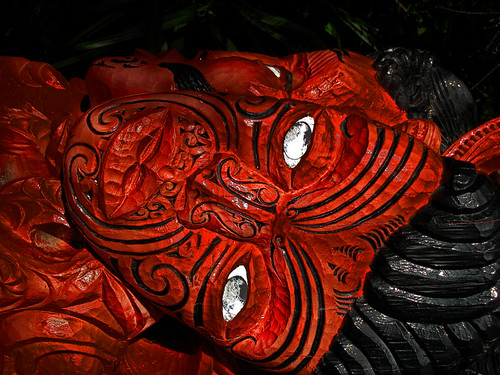Serpiente emplumada (ometeotl)
Ometeotl is the name of the dual god Ometecutli/Omecihuatl in Aztec mythology. Teotl originally was translated as god, but most translators[citation needed] now prefer lord since the concept is not equivalent to the European concept of God. Some people translate teotl as energy, but this is not generally accepted. The literal translation of the name is "Lord Two", Miguel Leon-Portilla interprets this as "Lord of the Duality".
In the Nahua/Aztec tradition, Ometeolt/Omecihualt is a dual god, male and female, who was the creator of Cemanahuatl. Ometeotl's male aspect is Ometecutli, his/her female aspect is Omecihuatl. S/he dwelled in and ruled over Omeyocan ("Two Place"), home of the gods.
There were no temples dedicated to this god, but references to Ometeotl appear in a number of post-conquest Aztec codices and poetry.
Ometeotl was also referred by other names: Tloque Nahuaque, "Owner of the Near and Far"; Moyocoyatzin, "The Inventor of Himself"; Ipalnemohua, "The Giver of Life".
Ometecuhtli ("two-lord"; also Ometeoltloque, Ometecutli, Tloque Nahuaque, Citlatonac), the male aspect, was a deity associated with fire, a creator deity and one of the highest gods in the pantheon, though he had no cult and was not actively worshipped.
An Aztec poem declares:
The giver of life mock of us
only a dream we chase
oh my friends
our hearth trust
But he really mock of us
but with emotion we enjoy
in the green things and in the paintings
The giver of life make us live
he knows, he rules
how we, the men, will die
nobody, nobody, nobody
really lives on earth.
(Manuscript, Cantares Mexicanos/National Library of Mexico)
* * *
Ometecuhtli (El Señor Dios) y Omecihuatl, La Señora Dios, formaban la dualidad creadora en la religión mexica. Eruditos como Miguel León-Portilla traducen a Ometeótl/Omecihuatl como Señor/Señora de la Dualidad, implicando un solo dios de carácter dual.
Ometecuhtli representa la esencia masculina de la creación. Es esposo de Omecihuatl y padre de Tezcatlipoca rojo (Xipe Tótec), Tezcatlipoca negro (Tezcatlipoca), Tezcatlipoca blanco (Quetzalcóatl), y Tezcatlipoca azul (Huitzilopochtli). También se le llama Tonacatecuhtli [tonaka'tekutli], "Señor de nuestra carne".
| En ningún lugar puede ser la casa del sumo árbitro; |
| "Cantares Mexicanos" / Moyocoyatzin |
Este es un dios antiguo, que no tenía templos, y era casi desconocido por el pueblo, pero muy nombrado en los poemas de las clases altas. Debido a que se le menciona de una manera que parece ignorar el resto de la cosmogonía azteca, Leon Portilla sugiere que tal vez los sabios aztecas estaban en un proceso de aglutinar a los demás dioses en esta deidad.
Omecihuatl (Mujer dos, Señora de la Dualidad), diosa que representa la esencia femenina de la creación en la religión mexica. Esposa de Ometecuhtli. También se le conoce como tonacacihuatl, Señora de nuestra carne.
Ometeótl es también llamado "in Tonan, in Tota, Huehueteotl", "Madre nuestra, Padre nuestro, Viejo Dios". Como dualidad y unidad masculino-femenina, reside en Omeyocann, "el Sitio de la Dualidad", que, a su vez, ocupa el más alto lugar de los cielos. El/ella es padre/madre del Universo y cuanto hay en él. Como "Señor y Señora de Nuestra Carne y Sustento", suministra la energía cósmica universal de la que todas las cosas derivan, así como la continuidad de su existencia y sustento. Provee y mantiene el ritmo oscilante del universo, y le confiere a cada cosa su naturaleza particular. Es en virtud de estos atributos que se lo/la llama "el Uno Mediante Quien Todos Vivimos" y el/la que "es el verdadero ser de todas las cosas, preservándolas y nutriéndolas". Por ser metafísicamente inmanente, Ometeótl es llamado/a Tloque Nahuaque, amo de lo cercano y lo lejano o el/la que está cerca de todas las cosas y de quien todas las cosas están cerca. En tanto epistemológicamente trascendente, se lo/la llama Yohualli-ehecátl, Uno que es Invisible (como la noche) e Intangible (como el viento). Recibe también los nombres de Moyocoyatzin, "el inventor de sí mismo" e Ipalnemohua, "el dador de vida".
La existencia de Ometeótl es sostenida y defendida por Caso, León-Portilla y López Austin (ver Bibliografía)
Para los aztecas, Téotl es una fuerza, un principio o una energía sacra autogenerada, única y dinámica, que creó y continuamente genera, permea y gobierna el universo. Se manifiesta de muchas formas, cíclica y regularmente, y en particular como dualidad (ver Ometéotl). Teótl es esencialmente devenir, movimiento y cambio.
http://en.wikipedia.org/wiki/Ometeotl
http://es.wikipedia.org/wiki/T%C3%A9otl
http://es.wikipedia.org/wiki/T%C3%A9otl


















